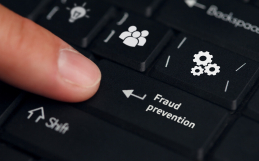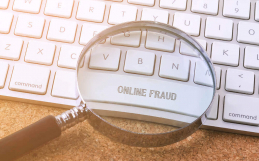2020 will always be remembered for COVID-19. The global pandemic has created chaos in the markets, strains on families, pressures for our medical and education systems, recessions, and a perfect landscape for fraudsters.
At Currency Converters, our hard work and adherence to best practices that discourage fraudsters from visiting our business has paid off thus far. Unfortunately, some of our customers haven’t been quite as fortunate. We have seen record numbers of frauds and scams affecting our clients and the impact of these crimes stretches far beyond finances.
Physical distancing, new relief programs, and the closure of many brick and mortar stores has resulted in a huge increase in the number of transactions that people are processing online. Here are some tips on how you can avoid online fraud during the pandemic:
How To Spot Online Fraud
While you might notice if your friend’s email address has changed, would you notice that your doctor’s email has changed?
If you are applying for a relief program like CERB, and landed on a website that looked like the Government of Canada’s website, would you be able to tell if it wasn’t?
Evidence would suggest that more and more people are not noticing small discrepancies in emails or websites created by fraudsters.
Applying for CERB or EI, shopping online, coordinating online grocery delivery, doing online medical appointments, and having virtual family dinners are some of the new ways in which we’re interacting online. Each of these activities presents an opportunity for a fraudster to infiltrate your system.
The Canadian Anti-fraud Centre has found that since March, there has been over 5,000 cases totaling more than $6.2 million in COVID-19 fraud and scams — and that’s just what’s been reported! Knowing that most fraud goes unreported would indicate that these numbers are greatly understated.
Tips On Avoiding Email Fraud (phishing)
Our inboxes are now overflowing with purchase confirmations, appointment notifications, surveys, social media updates, and more. It can be very difficult to decipher between a legitimate email and a fraudulent one. A few tips and tricks that we recommend include:
- Carefully inspecting the website address that you’re on.
Often, fraudsters will replicate the look and feel of a legitimate website, but the web address (URL) might be different from the official website of the business or organization. - Hover your mouse over any hyperlinks before clicking on them.
This will display the destination that the link leads to. It may also alert you to a fraudulent site before clicking on the link. - Be critical of emails that come to you from new sources.
Even if you are expecting contact from a specific person, agency, business or organization, note the address that the email comes from. Carefully read the content of the email before clicking on anything or opening any attachments. Often, the body of the email will give clues showing inconsistencies from the imitated author’s language pattern. - Enable dual or multi-factor authentication on your credit cards and banking logins.
This ensures that if a fraudster comes into possession of your login credentials, they will be unable to login without the secondary authentication.
If you find yourself the victim of a fraud, consider contacting your bank and local police department’s fraud division. Also, be sure to contact the Canadian Anti-fraud Centre. While your loss might not be recoverable, they can do wonders to ensure that you don’t fall victim to additional losses.
Have any questions about avoiding fraud online or exchanging or transferring money? Get in touch with us!





